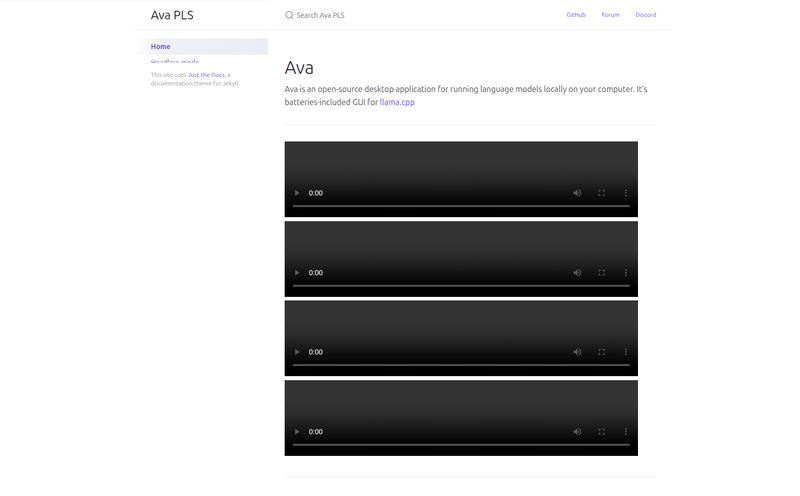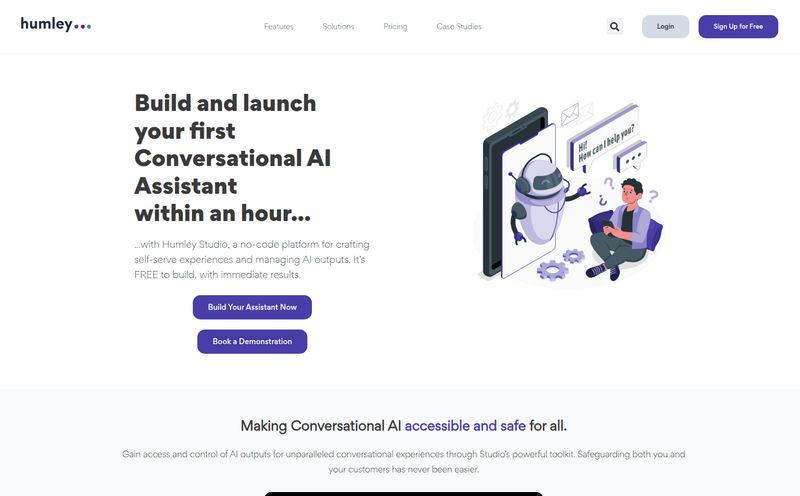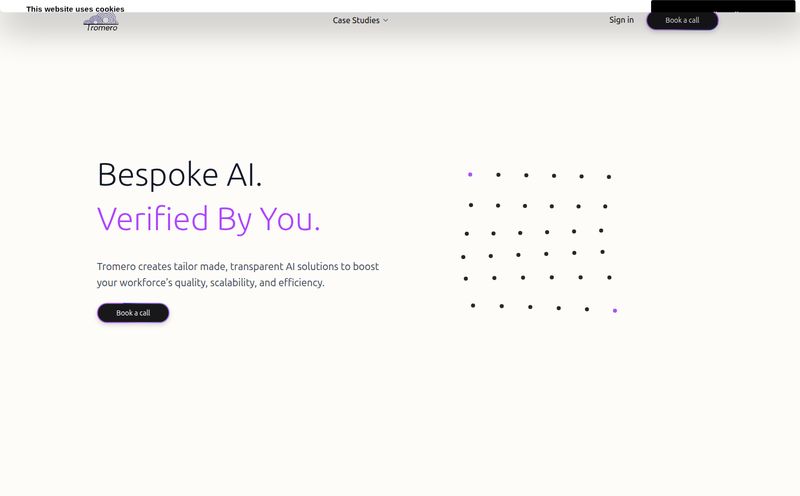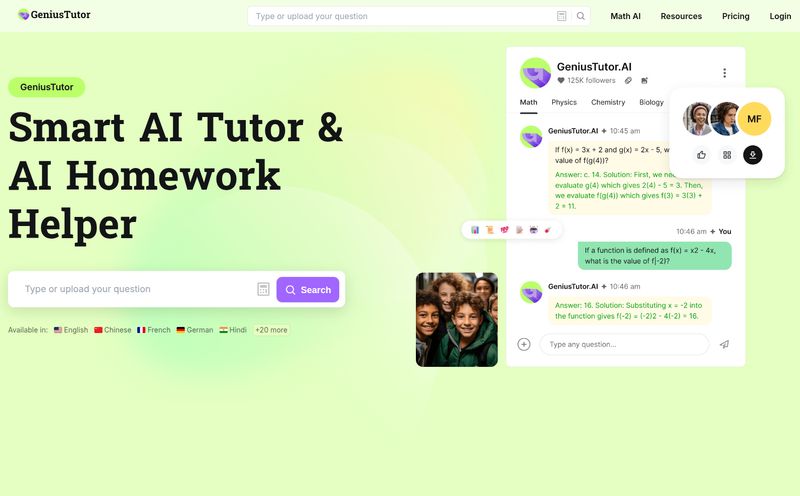The world of Large Language Models feels a bit like the wild west right now, doesnt it? Every single week, there’s a new headline. “New Llama 3 model drops!”, “Claude 3 Opus smashes benchmarks!”, “Is Gemini 1.5 Pro the new king?”. It’s a constant, dizzying barrage of information. As someone who lives and breathes this stuff for a living, even I get whiplash.
For most people—developers, marketers, startup founders—the big question isn't just “which model is the most powerful?” It's a much more practical, and frankly, more annoying question: “Which model is right for my specific task, and which one won't burn a hole in my wallet?”
I’ve spent more hours than I care to admit swapping API keys, running the same prompt through three different models, and squinting at the outputs trying to decide if the extra $0.05 per call was worth it. It’s a grind. So when I stumbled across a new tool called MIOSN, with the bold tagline, “Stop overthinking LLMs,” I was intrigued. And skeptical. Very skeptical.
So, I took a look. And what I found was… surprisingly refreshing.
So What Is MIOSN, Anyway?
Think of MIOSN as a talent agent for LLMs. Instead of you having to scout, interview, and negotiate with every AI model out there, MIOSN does the legwork for you. The core idea is brilliantly simple: you give it a task you need done—a real-world prompt—and it sets up what it calls an “LLM Interview.”
It takes your prompt and runs it through a bunch of different models at the same time. Then, it presents you with the results, side-by-side. You get to see the actual outputs, the quality of the work, and—this is the kicker—the cost associated with each one. It’s less about abstract benchmarks and more about tangible, practical results for your needs.
Escaping the Dreaded 'LLM Model Maze'
The term MIOSN uses, the “Model Maze,” is just perfect. It perfectly captures that feeling of being lost in a labyrinth of options. I was recently working on a project to generate meta descriptions for a bunch of e-commerce product pages. The debate in my head was agonizing.
“Okay, GPT-4 Turbo will probably give the best results, but the cost will add up over thousands of pages. Maybe I can get away with GPT-3.5-Turbo? Or wait, what about Claude 3 Haiku? I heard it's super fast and cheap. But is the quality there? Maybe I should just fine-tune an open-source model…”

Visit MIOSN
It’s exhausting. This is the exact kind of analysis paralysis MIOSN aims to solve. By turning the abstract choice into a concrete, visual comparison, it cuts through the noise. You’re no longer guessing; you’re assessing actual evidence.
How MIOSN Actually Works Its Magic
From what I can gather from their site, the process is straightforward, which I absolutely love. No over-engineered nonsense. It seems to boil down to a few simple steps.
First, You Set up the “LLM Interview”
This is just a fancy, but effective, way of saying “enter your prompt.” You bring the job to the interview. For instance, you could paste in an email from a disgruntled customer and ask the LLMs to “draft a polite, empathetic, and helpful response that offers a 10% discount coupon.” You provide a real task, not some generic test.
Then, You Run It and Assess the Candidates
With a click, MIOSN sends your prompt out to its roster of LLMs. This is the part that saves you all the time and API-wrangling. It’s like holding a group interview where every candidate has to answer the exact same challenging question on the spot. You get to see who shines, who fumbles, and who gives a lazy, generic answer. It’s all about seeing the raw performance on your specific use case.
Finally, You Skip the Maze and Pick a Winner
The results page is where the decision happens. You're not just looking at text. You're looking at a value proposition. Model A might give a slightly more nuanced response, but Model B is 95% as good and costs half as much. For a task you need to run a thousand times a day, that cost difference is enormous. MIOSN gives you the data to make that business decision, not just a technical one.
Who Is This Tool Really Built For?
At first glance, you might think this is just for hardcore AI developers. But I don’t think so. I believe its real power is for the people who are implementing AI in their day-to-day work.
- Marketers: Trying to find the best model for generating blog post ideas, social media captions, or ad copy? Run a contest with MIOSN and see who delivers the most creative results for the lowest cost per-word.
- Sales Teams: Need to quickly summarize call transcripts or draft personalized follow-up emails? Find the model that best captures the key points without hallucinating details.
- Product Managers: Sifting through user feedback to identify themes? Test which LLM can categorize and summarize feedback most accurately.
- Engineers: Looking for an AI to help write documentation or refactor code? See which model understands your code context best without needing endless re-prompting.
It’s a tool for practitioners, not just researchers.
The Good, The Bad, and The ‘Coming Soon’
No tool is perfect, especially a new one. Here's my honest breakdown.
What I'm Genuinely Excited About
The core proposition is a massive win. Simplifying LLM selection and optimizing for cost is a real, painful problem that needed solving. I’m tired of hype; I want practical tools that save me time and money, and MIOSN seems to hit that nail right on the head. It's focused. It solves one problem and appears to do it well. In a world of bloated, do-everything platforms, that's a breath of fresh air.
A Few Caveats and My Wishlist
Alright, it’s not all sunshine and rainbows. The platform is currently only accessible via desktop. In 2024, that feels a bit limiting, but for a new product, it’s understandable. You have to start somewhere.
The bigger thing is the “Coming Soon” section. The features listed there are the ones that will take MIOSN from a cool utility to an absolute powerhouse: File & Image Understanding, API integration, and LLM Multi-Platform support. The API integration is the one I’m watching like a hawk. The ability to programmatically find the best model for a job and then route your production traffic accordingly? That’s the holy grail of LLM cost-efficiency. I am genuinely pumped for that.
What's the Deal with MIOSN's Pricing?
This is the million-dollar question, isn't it? As of my writing this, there's no public pricing page. The site encourages you to “Get Started” and try it, which suggests a free tier or trial is available. My gut says we'll likely see a tiered SaaS model—perhaps a free plan for a limited number of “interviews” per month and paid plans for higher volume and team features. A pay-per-use model tied to the API, once it's released, also seems plausible. For now, the best way to find out is to jump in and see for yourself.
Frequently Asked Questions About MIOSN
How is MIOSN different from just trying different LLM APIs myself?
It’s about efficiency and direct comparison. Instead of you needing multiple accounts, API keys, and coding a script to test each model, MIOSN puts everything in one place. You get a single interface for simultaneous testing and a clear cost breakdown, saving you significant time and effort.
Do I need to be a developer to use this?
It doesn't look like it. The interface seems designed for anyone who writes prompts. If you can describe a task to ChatGPT, you can likely use MIOSN. The real value is for anyone, technical or not, who needs to choose the right AI for a job.
Which Large Language Models does MIOSN support?
The website doesn't provide a specific list, but the premise of being a model-selection platform implies it connects to a wide range of major LLMs from providers like OpenAI, Anthropic, Google, and potentially open-source options. The goal is to give you a broad choice.
Is my data secure when I use MIOSN?
This is a critical question for any AI tool. While I don't have their specific privacy policy, any reputable platform in this space should treat user inputs with strict confidentiality and have clear policies about data retention. This is something I’d look for on their site before using it for sensitive commercial data.
When will the MIOSN API be available?
It's listed as “Coming Soon.” For tools like this, an API is a major milestone. I would recommend joining their mailing list or Discord channel (mentioned on their site) to get the latest updates. This feature will be a game-changer for automating workflows.
Final Thoughts: Is MIOSN Worth Your Time?
So, is MIOSN the real deal? Based on its premise, I’m optimistic. Cautiously, but genuinely optimistic. It’s not trying to be the next foundational model. It’s not trying to build AGI. It’s a smart, practical tool designed to solve a very real, very current problem for a huge number of people.
It’s a compass for navigating the Model Maze. While it’s still early days and I’m eagerly awaiting those “coming soon” features, the core idea is one of the most sensible things I’ve seen in the AI space this year. If you’ve ever felt that headache of choosing between a dozen different LLMs, you owe it to yourself to at least give MIOSN a look. It might just be the thing that lets you stop overthinking and start doing.
Reference and Sources
- MIOSN Official Website
- Sequoia Capital on the Generative AI Landscape - An overview of the expanding market that creates the 'maze' MIOSN helps navigate.



